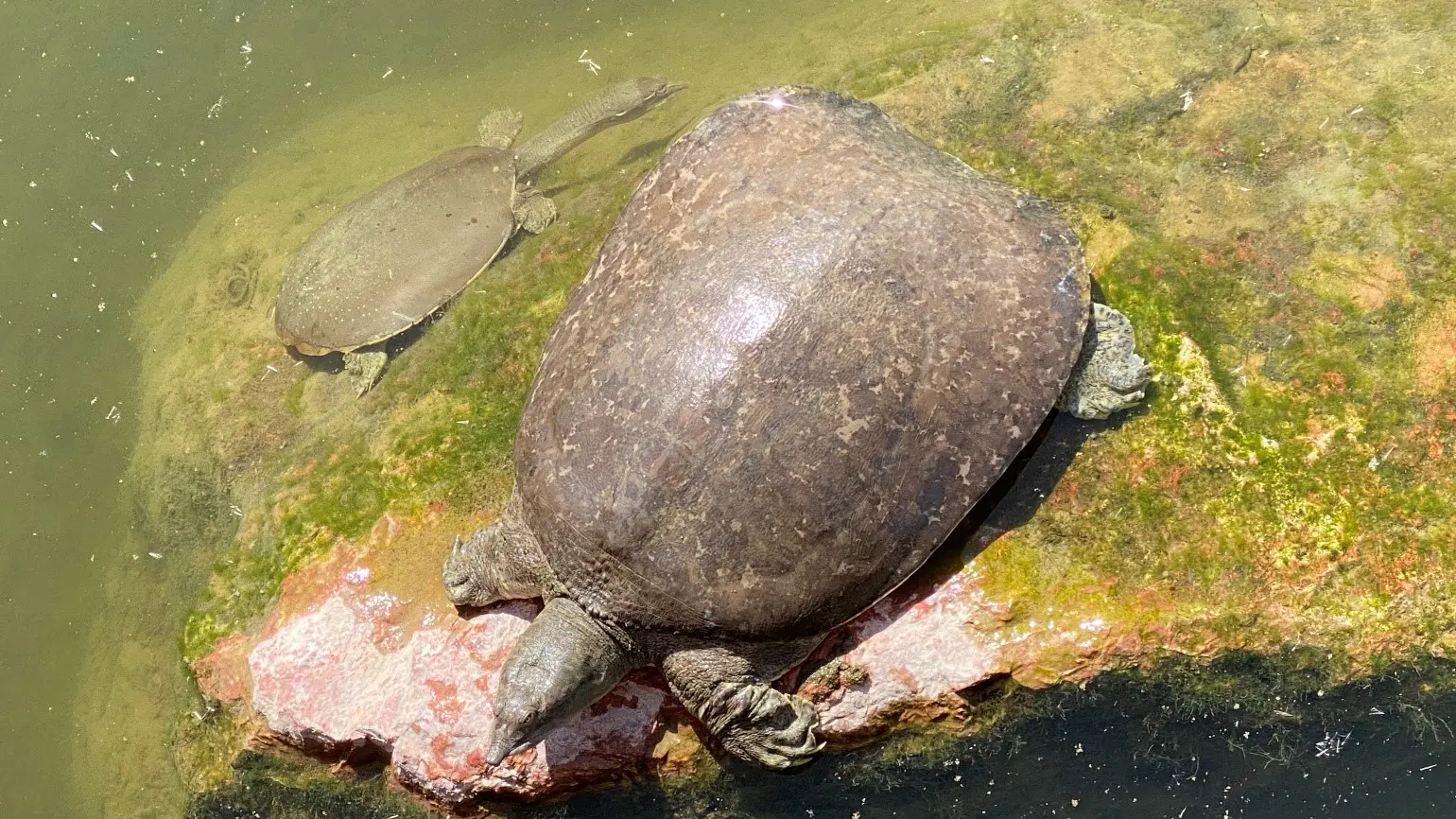The Texas Spiny Softshell Turtle

WHICH WETLANDS PARK TURTLE IS NO “SOFTY”?
What a cute face! At least, I think so. To me, Texas spiny softshell turtle (Apalone spinifera emoryi) faces always look a bit like Pinocchio just as his nose began to grow. But “cute” doesn’t mean this turtle is a “softy,” despite its name. In fact, if the common name was “Texas Spiny Toughshell” it would probably fit this turtle’s personality much better than the name it has.
That innocent-looking nose hides a very capable aquatic predator with a cranky personality, only too happy to defend itself vigorously and effectively from all comers. The turtles are amazingly quick-moving, both on land and in the water. Those fully webbed and sturdy-clawed feet can swim fast, hustle quickly over dry ground, and thoroughly claw any unwary person trying to pick up and hold the turtle. Spiny softshells have sharp, tough beaks and strong jaw muscles and their extra-long necks allow them to whip their heads around almost as far as their back legs to take a piece out of anyone (or anything) foolish enough to hold onto them. In the wild, they can be aggressive and territorial with other softshells. One female at the Gladys Porter Zoo in Brownsville, Texas attacked and bullied a much larger alligator gar fish in her display tank until the curator removed her from the tank!
Active mostly in daylight, spiny softshells will swim quickly in active pursuit of prey. They are also excellent ambush hunters, lying concealed under a layer of sediment at the bottom of a pond, often with only their eyes and a part of their head exposed. When something good to eat comes by, a quick grab and it is lunchtime for the turtle! The menu at the “Softshell Café” includes freshly caught fish, crayfish, snails, insects and other invertebrates, tadpoles, and frogs. Even carrion is considered a tasty treat. Some softshells have been found with vegetation in their stomachs, though the biologists involved think the plants may have been accidentally swallowed along with tasty morsels like aquatic snails.
Spiny softshell turtle females are larger than males, with somewhat oval shaped carapaces (top shells) up to twenty inches long. Males have round carapaces up to nine inches long. Males keep the spots they have on their shells at hatching all their lives, but females become a rather plain blotchy gray, olive, or brown as they mature. Both males and females have two dark-bordered light stripes on each side of the head, one extending from the back of the eye and one from the back of the angle of the jaw, like turtle “stage makeup.” Mature females may also sport orange-colored lips, looking for all the world as if they are wearing bright lipstick!
Though very common at Clark County Wetlands Park, Texas spiny softshells are not native to the Colorado River system or to the Park. Their native range includes the Rio Grande and Pecos River drainages of Texas and New Mexico north of the Gulf of Mexico. Introduced populations are now well established in Nevada, Arizona, California, and Utah.
These turtles like both fast-flowing streams and quiet ponds, and they are often seen at Park. When you visit, watch for them swimming lazily in Nature Preserve ponds, often with their heads and necks raised and their tails lower in the water, looking very much like small Loch Ness Monsters. They are easily seen basking along pond shores or on partly submerged rocks or logs. Observant watchers, especially those with binoculars, may also see them along the fast-flowing Las Vegas Wash. A good observation spot is looking downstream from the Big Weir Bridge in the Nature Preserve.
– By Chris Leavitt, President; photo by John Drake
